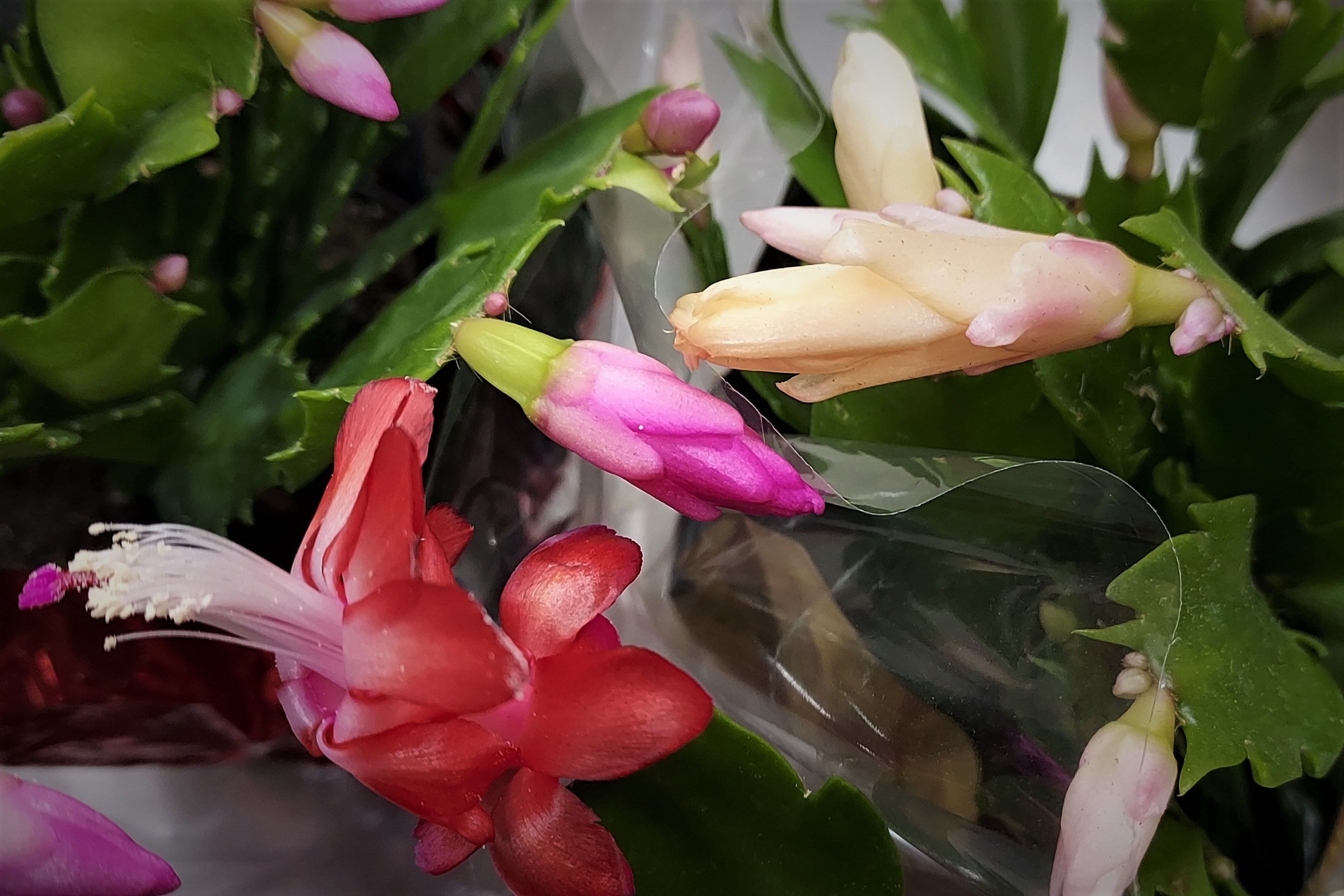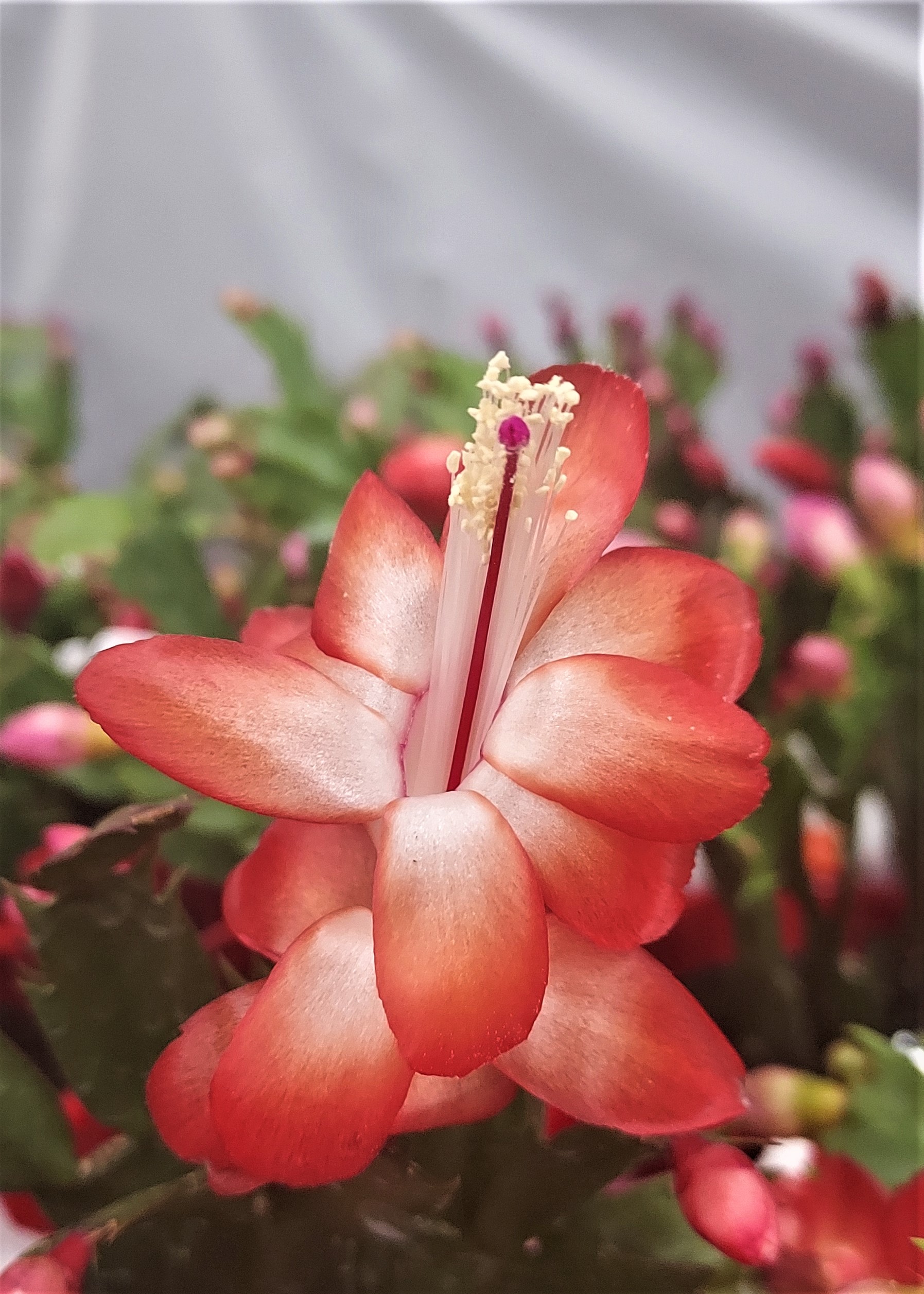How to care for and get your holiday cactus to rebloom
Easy tips and tricks for successful holiday cactus reblooming every year.

It’s that time of year again! Grocery stores and plant nurseries are overflowing with brightly flowering holiday cacti. It’s difficult to resist the displays of pink, white or red blooms just in time for the holidays. Many of us have succumbed to holiday cacti in the past or been gifted one during a previous winter holiday season. Every year, Michigan State University Extension horticulture educators and Ask Extension receive calls and emails about how to care for these cacti after the holidays.
As home gardeners, now it is the time of year we need to start preparing these plants if we want them to bloom again. Holiday cacti require a little more involvement on the part of the gardener to have them flush with flowers this winter season.
Holiday cacti belong to the genus Schlumbergera. Common names include Christmas cactus, Thanksgiving cactus, crab cactus, Easter cactus and holiday cactus. The Schlumbergera commercially available are hybrids, crosses between different species to achieve desirable flower colors and habits. Flower colors range from white to pink to red to salmon to soft purples or lavender.
Their needs are very different from what most gardeners think of when it comes to cactus. Native to southeast Brazil, plants in this genus grow on trees or rocks in habitats that are shaded with high humidity. As you can imagine, a plant that grows naturally in the branches of tropical trees, they suffer when exposed to dry conditions and direct sunlight. They prefer to be potted in humus-rich soil and to be a little “pot bound,” similar growing conditions to that of inside the crook of a tree branch in a tropical or sub-tropical climate.
As with most plants, mimicking their natural habitat is key to getting a holiday cactus to thrive. They prefer bright, indirect light or filtered light. In the house, they can be grown in west-, north-, and east-facing windows (south-facing windows are too bright). They should receive enough moisture that the potting material does not dry out but does not remain wet.

Holiday cactus bloom in their native environment near the end of the rainy season. Because their native region is tropical and located close to the equator, the amount of light the cacti receive from season to season does not change as dramatically as it does on North America. In addition, the temperatures in southeast Brazil do not typically vary more than 20 or 30 degrees Fahrenheit over the course of the year.
Consequently, altering the amount of light and the temperature of a holiday cactus’ environment stresses the plant and can encourage it to bloom. The secret to good flower bud production involves controlling temperature and how much light the plant receives or, more accurately, how much light the plant does not receive.
To encourage bud set, provide bright light, temperatures between 55 F and 65 F, and 13 hours or more of continuous darkness each day. For flowers during the winter holiday season, long nights should be started in late September or October and continued for eight weeks. If the continuous period of darkness is interrupted by light, even for a short amount of time, the plant may drop its flower buds. Flower buds may also drop if the plant is exposed to drastic changes in temperature, like during the trip from a nursery to a customer’s car on a cold December day or if a radiator heats up near the plant’s location in a living room.
How does one provide 13 hours of continuous darkness a day? Some cactus owners throw a blackout curtain or blanket over their plant, move it into a closet or cover it with a box. Smartphone calendar notifications can serve as reminders to remove the plant from darkness and when to replace it.

After the plant has finished flowering for the season, care for it as you would other houseplants. Do not allow the soil to become wet or waterlogged, but do not let it dry out either. Wait until new growth begins in late winter or spring to apply a half-strength balanced fertilizer, such as 10-10-10, on a monthly basis. Holiday cacti can be placed outside during the summer but should be kept away from intense heat and direct sunlight. Too much direct light can burn leaves or turn a reddish color. Plants should be brought inside as soon as nighttime temperatures dip below 60 F. Reduce fertilizer applications and water in the fall as you prepare to force the plant to bloom in winter.
Next year, you may notice that the flower colors are not quite the same as when you purchased the plant. Some cultivars exhibit different flower colors depending on the temperature during bud formation and growth. Lower temperatures can produce pink tones in white or yellow selections or deepen the color of already pink or red flowers. Nutrients available to the plant may also affect flower colors.



 Print
Print Email
Email